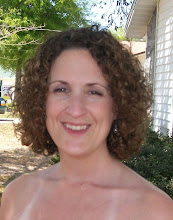Luke had an appointment with his nuerologist yesterday. We still do not have results from the blood work, urine work, EEG, and MRI. It is frustrating. I so badly want answers now. I need to wrap my head around something, deal with it emotionally, and move on. I am almost feeling angry. One thing was said during the appointment that totally shocked me. The doctor said she would feel comfortable giving him a diagnosis of cerebral palsy. When I thought about someone with CP, my mind automatically took me to experiences with people in wheelchairs who do not use their arms, hands, legs, and feet. These same people also cannot communicate. Luke just doens't fit into that group of people. He uses his arms and hands and he at least moves his legs and feet. I really didn't respond to what the doctor said. I really didn't know a whole bunch about CP.
I called Marty after the appointment. He didn't want to talk about it. I then talked to my mother who told me that she had been thinking this all along, but also knows that doctors give the CP diagnosis when they don't know what is really going on. Mom is always so good at helping me find peace.
So, I went online and looked it up... and actually, I was quite surprised to find the diagnosis is pretty right on. I am looking forward to see if the MRI and EEG support the theory that Luke is CP. Here is some CP information I have found...
What is Cerebral Palsy?
The term cerebral palsy refers to any one of a number of neurological disorders that appear in infancy or early childhood and permanently affect body movement and muscle coordination but don’t worsen over time. Even though cerebral palsy affects muscle movement, it isn’t caused by problems in the muscles or nerves. It is caused by abnormalities in parts of the brain that control muscle movements. The majority of children with cerebral palsy are born with it, although it may not be detected until months or years later. The early signs of cerebral palsy usually appear before a child reaches 3 years of age. The most common are a lack of muscle coordination when performing voluntary movements (ataxia); stiff or tight muscles and exaggerated reflexes (spasticity); walking with one foot or leg dragging; walking on the toes, a crouched gait, or a “scissored” gait; and muscle tone that is either too stiff or too floppy. A small number of children have cerebral palsy as the result of brain damage in the first few months or years of life, brain infections such as bacterial meningitis or viral encephalitis, or head injury from a motor vehicle accident, a fall, or child abuse.
Is there any treatment?
Cerebral palsy can’t be cured, but treatment will often improve a child's capabilities. Many children go on to enjoy near-normal adult lives if their disabilities are properly managed. In general, the earlier treatment begins the better chance children have of overcoming developmental disabilities or learning new ways to accomplish the tasks that challenge them. Treatment may include physical and occupational therapy, speech therapy, drugs to control seizures, relax muscle spasms, and alleviate pain; surgery to correct anatomical abnormalities or release tight muscles; braces and other orthotic devices; wheelchairs and rolling walkers; and communication aids such as computers with attached voice synthesizers.
What is the prognosis?
Cerebral palsy doesn’t always cause profound disabilities. While one child with severe cerebral palsy might be unable to walk and need extensive, lifelong care, another with mild cerebral palsy might be only slightly awkward and require no special assistance. Supportive treatments, medications, and surgery can help many individuals improve their motor skills and ability to communicate with the world.
What research is being done?
Researchers are investigating the roles of mishaps early in brain development, including genetic defects, which are sometimes responsible for the brain malformations and abnormalities that result in cerebral palsy. Scientists are also looking at traumatic events in newborn babies’ brains, such as bleeding, epileptic seizures, and breathing and circulation problems, which can cause the abnormal release of chemicals that trigger the kind of damage that causes cerebral palsy. To make sure children are getting the right kinds of therapies, studies are also being done that evaluate both experimental treatments and treatments already in use so that physicians and parents have valid information to help them choose the best therapy.
Wednesday, June 10, 2009
Subscribe to:
Post Comments (Atom)

No comments:
Post a Comment